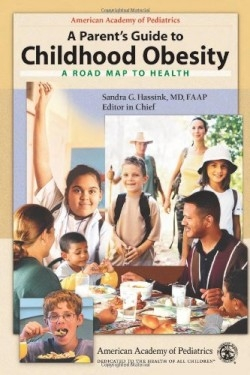A Parent's Guide to Childhood Obesity
A Road Map to Health
“A study at Harvard Medical School evaluating the diets of 16,000 boys and girls aged 9 to 14 years found that those who frequently ate with their parents were 1.5 times more likely to eat the recommended number of servings of fruits and vegetables each day.” While many people may not agree with this statement, the findings seem to reflect a great deal about the fast pace of life in America today. This book is part of a series for parents written by the American Academy of Pediatrics. The editor is a pediatrician who specializes in overweight and obesity issues in children.
The introduction contains a capsule of each chapter. For example, chapter three discusses the importance of encouraging children to become more active. Understanding how to calculate the Body Mass index (BMI) is also shown. Worksheets to help parents prepare for pediatrician visits are included in each chapter; those in chapter one concern the child’s genetics and family history and possible environmental factors that affect the child.
For anyone not sure if there really is an epidemic of obesity among children, here is a startling fact: “Over the past two decades, the prevalence of children who are overweight has doubled, while the number of overweight adolescents has tripled.” The American Academy of Pediatrics endorses the federal government’s guidelines concerning healthy eating and physical activity. The newest version, called MyPyramid, can be found at www.mypyramid.com. For instance, a fourteen-year-old boy who exercises less than thirty minutes on most days should consume six ounces of grains, two and a half cups of vegetables, two cups of fruits, three cups of milk, and five and a half ounces of meat and beans per day.
Activity Guidelines developed by the Centers for Disease Control and Prevention and the American College of Sports Medicine are also included. They are arranged in a pyramid as well. One level is devoted to activities that should be done daily, such as playing outside, while the levels closer to the top are inactivities, such as playing video games, which should be done less often.
Americans are eating more and more on the go, which is made evident by this fact: “1 of every 10 food dollars is currently spent at fast-food establishments, adding up to a collective food bill of more than $34 billion annually.” This book is an informative and easy-to-use source that will be a great help for parents of any age child, from infant to high school.
Disclosure: This article is not an endorsement, but a review. The publisher of this book provided free copies of the book to have their book reviewed by a professional reviewer. No fee was paid by the publisher for this review. Foreword Reviews only recommends books that we love. Foreword Magazine, Inc. is disclosing this in accordance with the Federal Trade Commission’s 16 CFR, Part 255.

